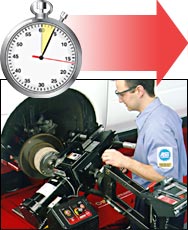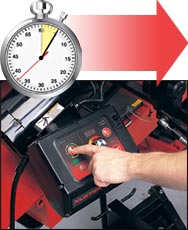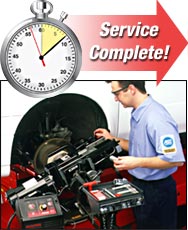Myths and Facts |
Myth: On-Car Lathes are difficult to setup.
Fact: Unlike on-car caliper mount lathes of the past, today’s modern hub-mount lathes require only a few simple steps to attach to the hub. |
|
Myth:
Compensation with On-Car Lathes is difficult.
Fact:
The Hunter OCL400 and OCL430MD utilizes sophisticated electronics and computerized measurements to eliminate the need for manual compensation by the operator. With a push of a button and a simple single-point adjustment, the OCL400 and OCL 430MD quickly compensates for lateral runout. |
Myth: It takes too much time to service a rotor with an On-Car Lathe.
Fact:
The OCL400 and OCL430MD can service each rotor in less than 9 minutes! |

Step 1: Attach adaptor and lathe… |
|

Step 2: Press button for computerized compensation and make a simple single-point adjustment… |
|

Step 3: Adjust cut depth and machine rotor with “on-the-fly” optimum speed. |
|
Myth:
Brake rotors can be removed easily.
Fact:
Not all rotors are easily removable. There are 3 types of rotors:
- Trapped: Often considered a design of the past, trapped rotors are now reappearing on popular late model vehicles and can require up to 1-1/2 hours per side to disassemble for servicing on a bench lathe.
- Hubbed: When machined on a bench lathe, hubbed rotors require bearing service and replacement seals which is time-consuming and often not part of the menu-driven price of brake services.
- Hubless: Hubless designs are easily removable. However, when machined with a bench lathe, hubless rotors are more susceptible to errors due to the stacking of tolerances because the rotor is not machined in its native environment.
|
|
Myth:
All brake rotors can be properly serviced on bench lathes.
Fact:
Auto manufacturers are establishing machining tolerances so tight that they can’t be achieved on a bench lathe without time-consuming trial-and-error setup measurements. |
|